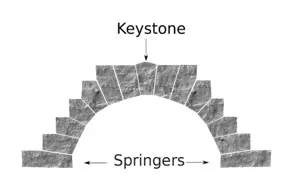Hanging …
It was execution day! The room was tense. The hangman had arrived early and was checking the ropes from which the convict would meet his end. The priests were impatiently waiting to perform the last rites. “Let’s get done and move on to the next execution”. With endless traffic jams and an overload of executions these days, who would blame them for wanting to get the job done and move on to the next?
If this got you all worked up, just relax! No one is being hanged here. This is just another review meeting of a startup CEO. And it is not too different from the execution day for a convict who has been handed a sentence of “death by hanging”.

If you are like most startup CEOs, you probably built a product based on your vision or outlook of an opportunity. You perhaps struggled to build the product, and then the struggles went on to find some beta customers. The beta customers gave you a big thumbs down, tore you and your product apart, and left you wondering if this was all worth it. You picked up your pride, went back, and eventually you built some traction with a handful of customers, just to keep yourself afloat.
Pleased with the results, you walked in to your next review meeting with your investors. This time, you were armed with impressive traction numbers laid out on nice powerpoint presentations. But your investors wanted scale, and insisted that you had burned too much cash for your stage at that time.
And they always tend to talk about some other startup which has done better than you. The more sympathetic souls in the room consoled you and promised to find you the best set of advisors and mentors who had “been there and done it”, and would help you cross the choppy waters.
More advice followed. “Hire the best”, “Hire the experienced”. “I know just the right Sales guy for you”. Confused? If you are like me, you got out and ended up making the mistake of actually heeding some of that advice. You hired a head-hunter, and started interviewing and even hiring a VP of Sales.
Did your sales take off? Heck no! So, what went wrong? As a startup CEO myself, I give you a piece of insight baked in my own “experience” (a euphemism for my own screw-ups). I promise that I am not asking you for a retainer or sweat equity in return, or asking you to put my photoshopped Tom Cruise look-alike picture on your website as a member of your Advisory Board!
The Path …
My advice is ridiculously simple.

Architects define a keystone as that one stone which holds the entire arch together. You take the keystone out, and the arch will collapse.
For pretty much the same reason, biologists call a tree a keystone tree when it is the one which keeps the forest and its wildlife together – it provides shade for other plants to grow, gives food and shelter to animals and birds and supports the entire forest ecosystem. You take the keystone tree out and the entire forest will wither away in no time.
So, back to business. Do you have your keystone customers yet? If not, it’s best to go back and acquire these few keystone customers first.
Your keystone customers are the pioneers and evangelists who will give you your first break. They will use your product and, if they love it, propagate it. They are not easy to find or please, but they are the first step to the market. Once you get them, they will help you build your market, and stick with you till your product becomes irrelevant.
Finding them …
How do you go about getting your keystone customers? For starters, ignore all theadvisors who ask you to rapidly scale-up without first acquiring keystone customers. If they are able to help you acquire your keystone customers, it’s a different story.
Next, take your investors, colleagues and all other stakeholders along in your search for the keystone customers. Unless they also believe that this is the right thing to do, you will stumble again.
No one wears a badge indicating that he/she is a keystone customer. So how the hell do you spot a keystone customer?
Here are some common traits. A keystone customer will buy from you based on what you have right now in whatever shape and form it is. He will be tolerant of your product’s imperfections and work along with you in fixing these. He wants to be able to say that he helped you build the product from your crappy start. He loves technology, though he may not be a technologist himself. He loves to be the evangelist. He loves, above all, to be the pioneer and the first to get off the block with your technology or product. He will not ask for proof points and case studies, and always has a huge appetite for risk. While it can sometimes be misleading, your keystone customer will have a junkyard of gadgets and gizmos around him, which he bought only for the delight of being the first. Novelty and being a pioneer are far greater rewards for him than mundane matters like RoI.
If, however, he asks you for a reference or a testimonial and wants to see other customers who are using it or an RoI for buying your product, just RUN ! He is not your keystone customer.
Selling to Keystone customers
Selling to a Keystone customer is different and sometimes the opposite of selling to mainstream customers. Some tips –
- No powerpoints please, show him the product instead.
- Be honest, show him the product as it is and let him tear it apart. He will help you fix it too.
- Listen, really listen, and act on his feedback. Build the next version and show it to him for his approval.
- Charge him the full price. Don’t give a discount, but give him all the support and tender loving care you can.
- Negotiate that he uses 100% of the product 24x7.
- Make sure you make your keystone customer successful by any and all means.
- As you start scaling up, remember you need keystone customers in every market you serve and every segment of the market. If you are selling to SMBs, a keystone customer in UP may not have much influence on your market in Tamil Nadu.
- Make it the DNA of your company to acquire keystone customers. Every sales person in your company needs to acquire a target number of keystone customers and manage these accounts for life! Yes, life!
- No matter how successful your startup becomes, be prepared for being the account manager of these customers for life.
So you want to scale-up quickly? Get your keystone customers first! Nothing else matters.
(Disclaimer: The views and opinions expressed in this article are those of the author and do not necessarily reflect the views of YourStory.)







